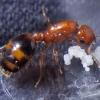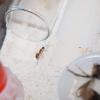I was out looking for pheidole brood in a usual spot and I lifted a rock in a nearby area to find a massive Solenopsis xyloni colony but the weird thing was that there was at least 3 active queens in the nest. The colony was in the thousands, probably more, and had an abundance of brood so it was an old and healthy colony. But the thing is I don't recall any Solenopsis being poly so was what I saw just a pleo colony that hasnt killed off the queens despite being old or did I actually see a poly colony? I need to hear some of your thoughts. ![]()
- Formiculture.com
- Forums
- Gallery
- Members
- Member Map
- Chat




















